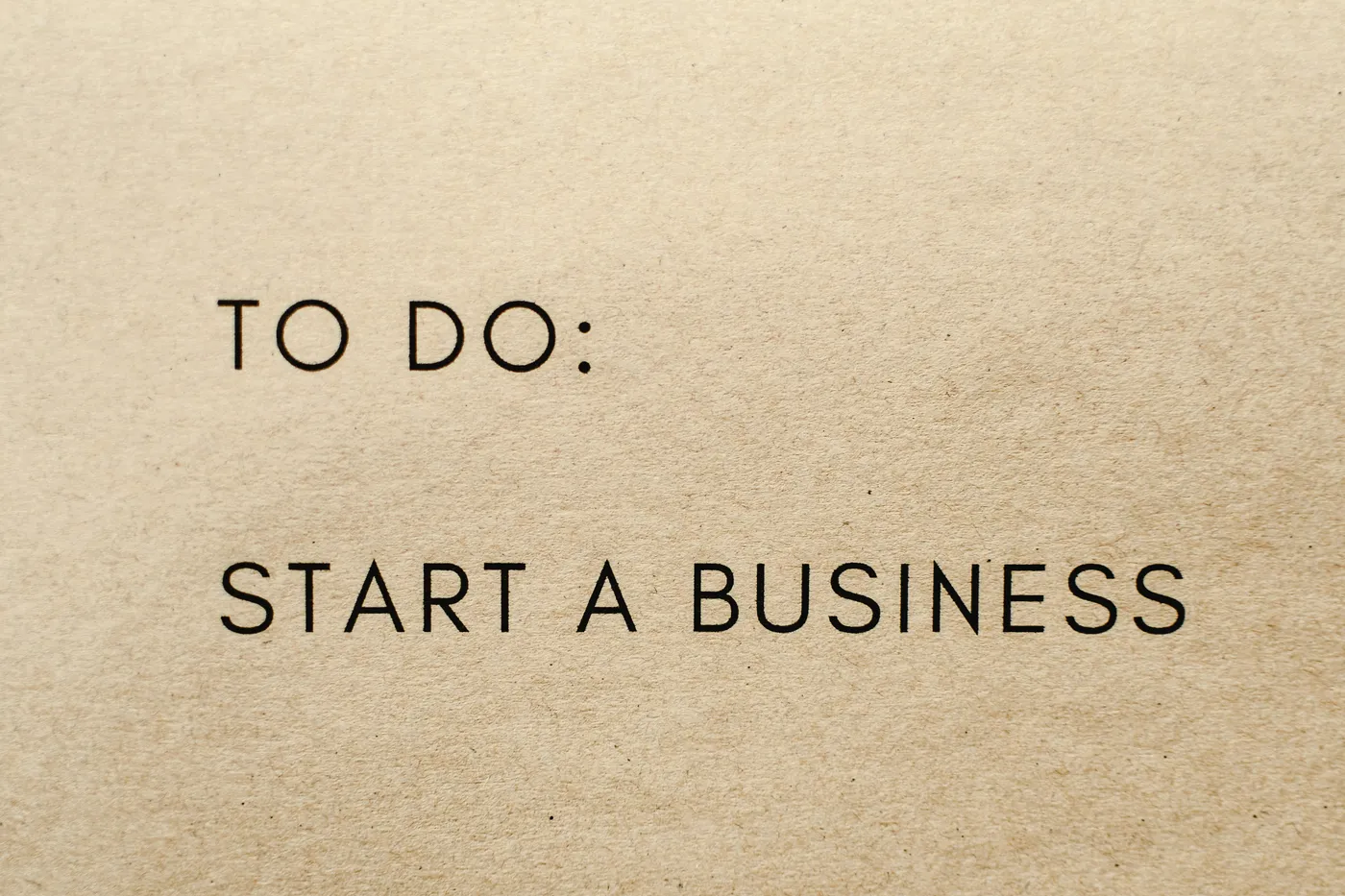In Canada, 1 in 2 young people between 18 and 30 want to become entrepreneurs. Starting a sole proprietorship in Ontario was my way of joining them. Having always had the desire to work for myself, this desire became a reality when I took action during my WHV in Canada. I launched an e-shop featuring eco-friendly and ethically-made clothing brands. Well, spoiler alert: it didn’t work. But I did get to experience starting a business in Canada. So, if you’re looking for information on how to become a sole proprietorship in Ontario, you’ve come to the right place!
Note: I’m based in Ontario. The information provided (especially on registration) may differ if you live in another province.
Contents
Understanding Sole Proprietorship in Ontario
Definition of sole proprietorship in Ontario
A sole proprietorship in Ontario is the simplest business structure you can choose. Whether you call it freelancing, self-employment, or sole proprietorship – it all means being your own boss. This legal status is more flexible than a “classic” business, making it easier to set up. Nevertheless, no legal distinction is made between the owner and the business. The owner is personally responsible for all debts, losses, and liabilities.
Sole proprietorship vs incorporation
Incorporation means registering as a business. You can decide whether to incorporate federally or provincially. If you’re on a WHP, incorporation will be difficult. Indeed, you’ll need to ally with a Canadian citizen who will sponsor you when you incorporate your company. I won’t go into more detail about incorporation, but if you’re interested, here are the major differences between sole proprietorship and incorporation in Canada.
| Elements of comparison | Sole proprietorship | Incorporation |
|---|---|---|
| Legal structure | No distinction between business and owner. The owner is personally liable for all debts and commitments incurred by the company. This means that his personal assets, such as his home and savings, can be used to settle company debts and judgments. | Distinction between company and owner. Owners’ personal assets are protected from the company’s debts and liabilities, provided no guarantees are given. |
| Taxation | Company income is added to personal income. Income is therefore taxed at the owner’s income tax rate when he files his income tax return. | Business income is taxed separately and generally benefits from tax advantages. |
| Administrative formalities | A sole proprietorship is relatively easy to set up and run, making it a good choice for getting started. | Companies are subject to more complex requirements (accounting, company minutes, etc.) and generally require the help of professional services. |
Pros and cons of being a sole proprietorship
Pros
- Easy and simple to set up
- Lower start-up costs
- Less regulation
- Easy to dissolve
Cons
- Personal liability
- Difficulty raising funds
- Income is taxed in the same way as personal income.
How to Register a Sole Proprietorship in Ontario
Do You Need to Register?
When registering a sole proprietorship in Ontario, you have two options: operating under your personal name or registering a business name. Let me break down both paths.
In Canada, you can start your business without having to register. The only condition is that you invoice under your name (in my case, Gwendoline Marco). How simple is that?
However, if you want to bill under a business name, you’ll need to register with your provincial Business Registry. This requires a lot more paperwork, which I’ll explain in more detail in the following paragraphs.
Step-by-Step Registration Process in Ontario (if applicable)
The first step is to choose the name under which you wish to register. Before finalizing the name, you need to make sure it’s not already being used by existing businesses. Once verified, you’ll need to reserve the business name with the Ontario government via a Nuans report. This report costs C$25 and allows you to reserve your business name for 5 years.
Next, you’ll need to register the business name. This costs C$60. Once done, ServiceOntario will assign you a nine-digit Business Identification Number (BIN). This number will help you open an account with the Canada Revenue Agency (CRA).
Note: the BIN is unique to ServiceOntario. It is different from the Business Number (BN) provided by the CRA. I’ll go into more detail below.
Managing Taxes as an Ontario Sole Proprietor (if applicable)
The different taxes in Canada
First of all, I think it’s best to start by distinguishing the different taxes in Canada:
- Goods and Services Tax (GST) / Taxes sur les produits et les services (TPS): This federal tax applies to most goods and services sold in Canada. The current GST rate is 5%.
- Provincial Sales Tax (PST) / Taxe de vente provinciale (TVP): This tax applies to goods and services sold in a given province. Four Canadian provinces have a PST: British Columbia, Manitoba, Quebec, and Saskatchewan. PST rates vary from province to province.
- Harmonized Sales Tax (HST) / Taxe de vente harmonisée (TVH): This is a combination of the federal GST and a provincial sales tax (PST). Five Canadian provinces have implemented the HST: Prince Edward Island, New Brunswick, Nova Scotia, Ontario, and Newfoundland and Labrador. HST rates vary from province to province.
Summary of taxes in Canada
| Province | Applicable Taxes | Percentage |
|---|---|---|
| Alberta | GST | 5% |
| British Columbia | GST + PST | 5% + 7% |
| Prince Edward Island | HST | 15% |
| Manitoba | GST + PST | 5% + 7% |
| New Brunswick | HST | 15% |
| Nova Scotia | HST | 15% |
| Nunavut | GST | 5% |
| Ontario | HST | 13% |
| Quebec | GST + TVQ | 5% + 9,975% |
| Saskatchewan | GST + PST | 5% + 6% |
| Newfoundland and Labrador | HST | 15% |
| Northwest Territories | GST | 5% |
| Yukon | GST | 5% |
Note: Taxes are billed according to the province in which the customer resides. For example, if you live in Ontario but your customer is based in Alberta, you’ll have to charge 5% tax.
Do I have to register for taxes?
You don’t have to register for HST if your sales over the last 4 quarters of your business are less than C$30,000. In some cases, however, registration is mandatory even with revenues under C$30,000. This is the case for cab drivers, for example.
So, if you’re not required to obtain an HST number, you won’t be charging it to customers, and you won’t be able to reclaim it on purchases you make in the course of your business. Nevertheless, you may decide to register voluntarily.
However, if your sales exceed C$30,000 over the last 4 quarters, you will have to invoice your customers and pay the taxes.
How do I register for taxes?
The quickest and easiest way to register for an HST number is to use CRA’s online business registration online (BRO). If you’re on a WHV, you’ll be considered a non-resident. You’ll first need to register for a Business Number (BN). The BN is different from the BIN assigned to you when you registered as a sole proprietorship with ServiceOntario.
Once completed, you’ll be able to register for an HST number. You’ll be asked for your Social Insurance Number (SIN), business name, and company information. Once your registration has been processed, the CRA will assign you your HST number. The format of the HST number is your 9-digit BN followed by RT0001 (for example 123456789RT0001). Keep this number in a safe place, as you’ll need it when you file your taxes with the CRA.
As mentioned above, four provinces (British Columbia, Manitoba, Quebec, and Saskatchewan) have their own provincial taxes. So, if you want to sell your products/services in one of these provinces, you’ll need to register with them as well. As before, the best way to do this is online. Registration is quick and easy.
- British Columbia: register to collect provincial sales tax British Columbia
- Manitoba: register to collect provincial sales tax Manitoba
- Quebec: register to collect Quebec Sales Tax (QST)
- Saskatchewan: register to collect Saskatchewan provincial sales tax
Obtain legal requirements and permits
Depending on your business sector, you may need specific licenses and permits to operate legally. These may include health certifications, liquor licenses, or professional licenses.
Open a bank account
Although it’s not compulsory, it’s strongly recommended that you open a separate bank account for your business, to facilitate financial management and record-keeping. You don’t need to open a business account. Personally, I’ve opened a personal account with Neo, where there are no account management fees.
Tax Obligations for sole proprietorship in Ontario
Income declaration
As a sole proprietorship, you will be responsible for declaring the income you receive from your business. This is done directly on your income tax return, which you must submit to the CRA by April 30. You’ll need to fill in the T1215 form, listing your income and expenses, which will calculate your net profit, or loss, for the past tax year. My advice (but it’s common sense): keep all your invoices, receipts, and bank statements whenever you make an expense. That way, you won’t forget anything when you file your tax return.
As we saw earlier, the income you earn from your business is added to your salaried income (if any). As a result, the applicable tax rates are the same. However, as you will not have been deducted at source, you will have to pay taxes when you file your tax return. So anticipate this amount, or you may be in for a nasty surprise!
CPP contribution (if income exceeds C$3,500)
If your net income exceeds C$3,500, you’ll also have to pay Canada Pension Plan (CPP) contributions. Indeed, you’ll have to assume the employer’s share of public pension (CPP) contributions. In your case, since you’ll be both the employee and the employer, you’ll have to contribute at the double rate (employee + employer) on earnings over C$3,500.
Taxes collection and remittance (if applicable)
If you charge Canadian sales taxes (HST, GST) to your customers, you’ll need to declare and pay these taxes to the tax authorities. This can be done on a monthly, quarterly, or annual basis.
Note: if you’re registered to collect taxes in one of the four provinces that have implemented the GST (British Columbia, Manitoba, Quebec, and Saskatchewan), you’ll also need to file a return for each of them.
In any case, I strongly recommend that you consult an accountant to help you navigate and ensure that you’ve fulfilled your tax obligations. In addition, he or she will be able to give you advice, specific to your situation, on any deductions to which you may be entitled.
FAQ about sole proprietorship in Ontario
Can I be a sole proprietor and have a salaried job on the side?
Yes, you can! As long as your status allows it. With a WHV, you’re not tied to a specific employer. So you can be a sole proprietor and have a salaried job at the same time.
Can I be a sole proprietor in any professional field?
No. Certain professions are regulated in Canada and require specific steps to be taken to practice them.
What do I need to include on my invoices?
Your invoices must bear the words “Invoice”, the date, your contact details, your customer’s contact details, the product/service sold, and the amount before tax. If you’re invoicing tax, you’ll also need to show the amount including tax.
Do I have to keep regular accounts?
Yes, it can be as simple as an Excel file.
Can I continue to work as a sole proprietor after my WHV ends?
Unfortunately not. As mentioned above, you need to be legally entitled to work in Canada to work as a sole proprietor in Canada. If your WHV has expired, you are no longer legally entitled to work in Canada. If you wish to continue your entrepreneurial activity beyond the validity of your WHV, you will need to change your status. This could mean applying for permanent residency, for example.
To sum up, you don’t need anything to become a sole proprietor in Ontario or more globally in Canada under a WHV. The only conditions are that you must operate under your name and generate no more than C$30,000 in sales. Ideal for starting a side business! If you wish to operate under a trade name, this becomes slightly more complicated, but it’s not the end of the world either. I hope I’ve managed to simplify the process for you, and that you at least have a slightly clearer idea of the different elements to focus on when launching your entrepreneurial activity. Starting a sole proprietorship in Ontario as a WHV holder taught me a lot about entrepreneurship. While my e-shop didn’t succeed, the experience was invaluable. And if, like me, your business doesn’t work out, you can always close your sole proprietorship very easily. I hope I haven’t put you off! So, did it make you want to take the plunge?
La Bise,





0 Comments